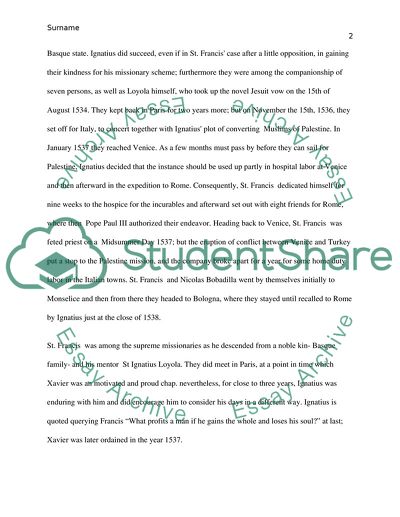Cite this document
(Biography of the Jesuit Saint Francis Xavier Book Report/Review - 1, n.d.)
Biography of the Jesuit Saint Francis Xavier Book Report/Review - 1. Retrieved from https://studentshare.org/religion-and-theology/1800509-bio-of-the-jesuit-saint-francis-xavier-and-book-reportreview-on-francis-xavier-and-the-jesuit-missions-in-the-far-east
Biography of the Jesuit Saint Francis Xavier Book Report/Review - 1. Retrieved from https://studentshare.org/religion-and-theology/1800509-bio-of-the-jesuit-saint-francis-xavier-and-book-reportreview-on-francis-xavier-and-the-jesuit-missions-in-the-far-east
(Biography of the Jesuit Saint Francis Xavier Book Report/Review - 1)
Biography of the Jesuit Saint Francis Xavier Book Report/Review - 1. https://studentshare.org/religion-and-theology/1800509-bio-of-the-jesuit-saint-francis-xavier-and-book-reportreview-on-francis-xavier-and-the-jesuit-missions-in-the-far-east.
Biography of the Jesuit Saint Francis Xavier Book Report/Review - 1. https://studentshare.org/religion-and-theology/1800509-bio-of-the-jesuit-saint-francis-xavier-and-book-reportreview-on-francis-xavier-and-the-jesuit-missions-in-the-far-east.
“Biography of the Jesuit Saint Francis Xavier Book Report/Review - 1”, n.d. https://studentshare.org/religion-and-theology/1800509-bio-of-the-jesuit-saint-francis-xavier-and-book-reportreview-on-francis-xavier-and-the-jesuit-missions-in-the-far-east.


